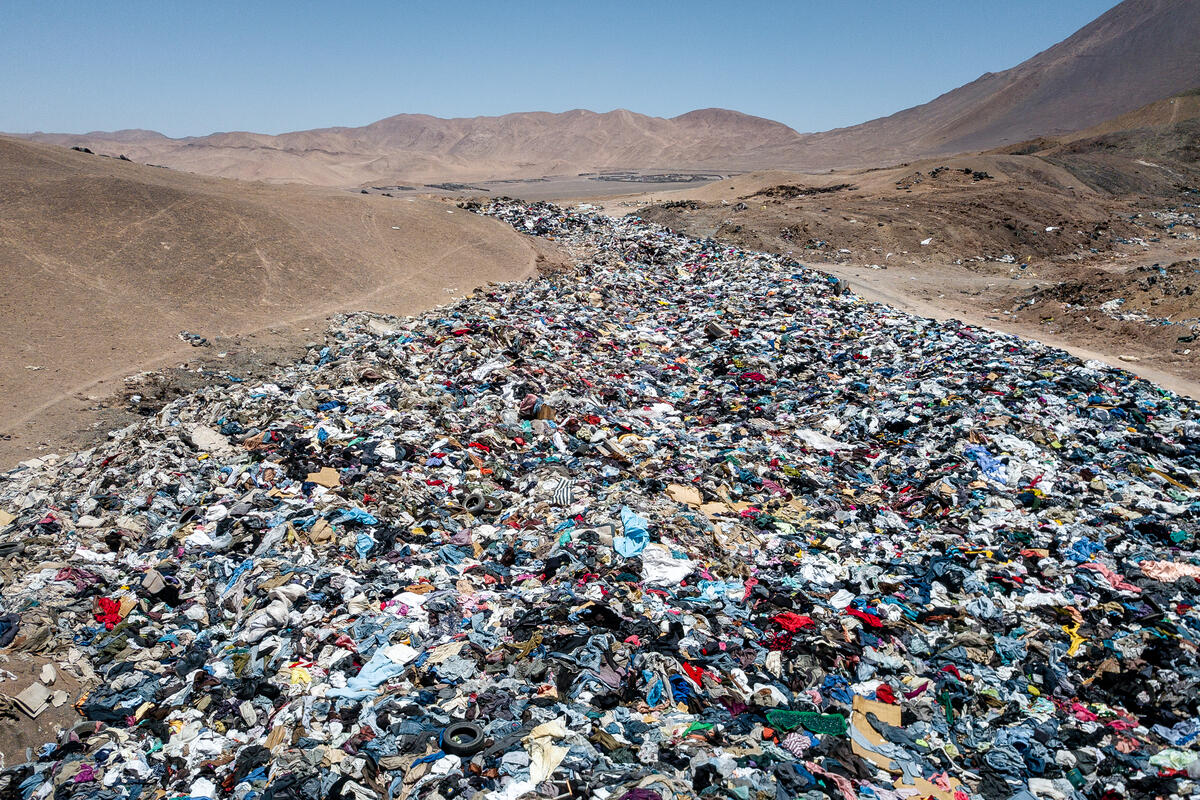Deep in Chile’s Atacama Desert, there lies an ugly monument to fast fashion and cheap online clothing stores: piles upon piles of unsold clothing mounting like synthetic sand dunes.
The majority of the world’s clothing is made in China, literally on the other side of the world from Chile. However, huge quantities of the clothes that aren’t sold in Europe, North America, and Asia end up here.
Leftover and second-hand clothes are sold to merchants who receive the imports through Iquique port in the Alto Hospicio free zone, northern Chile. While buyers from the capital of Santiago in the south of Chile purchase some of the clothing and redistribute it around Latin America and beyond, much of it remains unsold and is eventually dumped in the Atacama Desert, a conventionally remote and vast desert hundreds of kilometers away.
An investigation by Greenpeace Germany in 2021 found that up to 20 tons of old clothes end up being illegally dumped in the Atacama Desert each day on average. In total, it's amassed into a pile of some 39,000 tons of discarded textiles, according to the United Nations Economic Commission for Europe.

A view of the problem.
The mounting problem is a relatively recent one. It’s estimated that global clothing production doubled between 2000 and 2014, with the average consumer now buying 60 percent more pieces of garment compared to the early 2000s. Simultaneously, people keep each piece of clothing for just half as long as they used to.
Altogether, an estimated 87 percent of discarded textiles are chucked away and end up in landfill, despite the vast majority being viable for recycling and repurposing.
Beyond its heaps of clothing, the Atacama Desert is a fascinating and unique place. Squished between the Pacific Ocean and Andes Mountains, it’s the driest place on earth, other than the poles, where some areas haven’t seen a drop of rain for centuries. It’s such an otherworldly landscape, NASA uses it to train scientists who are set to look for signs of life on Mars.
The piles of clothing in portions of the Atacama Desert are merely the visible impact of the clothing industry, however. One of the big issues is water usage. Cloth manufacturing uses some 93 billion cubic meters of water each year, enough to meet the needs of five million people.
Along with water usage and the physical pollution it leaves behind, fast fashion also has a substantial impact on greenhouse gas emissions that lead to climate change.
Research suggests that the fashion and textiles industry was responsible for some 2.1 billion metric tons of greenhouse gas (GHG) emissions in 2018, about 4 percent of the global total. That’s more than all maritime shipping and international flights combined.
“The global production of clothing and footwear generates 8% of the world’s greenhouse gas emissions and, with manufacturing concentrated in Asia, the industry is mainly reliant on hard coal and natural gas to generate electricity and heat. If we carry on with a business-as-usual approach, the greenhouse gas emissions from the industry are expected to rise by almost 50% by 2030,” Elisa Tonda, Head of the Consumption and Production Unit at the UN Environment Programme, said in a statement in 2019.
- aum
-

 1
1




Recommended Comments
There are no comments to display.
Join the conversation
You can post now and register later. If you have an account, sign in now to post with your account.
Note: Your post will require moderator approval before it will be visible.